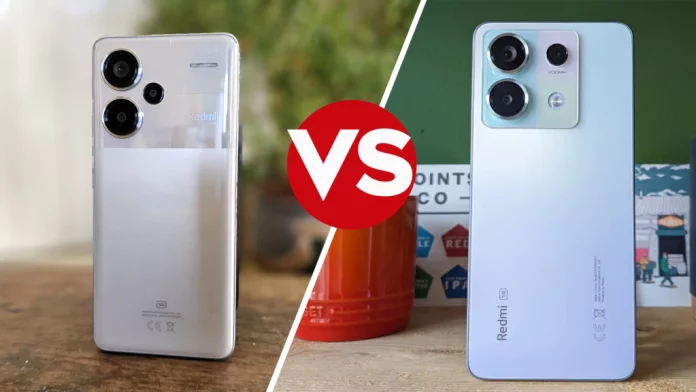Xiaomi has been shaking up the smartphone industry by creating phones that are both affordable and feature-rich, particularly with its Redmi Note series.
The company’s 2024 Redmi Note 13 lineup is no exception, particularly the two most costly variants. The Redmi Note 13 Pro is a great value at £339, but is it worth spending an additional £110 for the Redmi Note 13 Pro Plus?
Here are the main distinctions between them, which should help you determine which is best for you. However, there are other excellent choices in our roundup of the best mid-range phones.
Differences between Xiaomi Redmi Note 13 Pro & Note 13 Pro+
Both the Redmi Note 13 Pro and the Redmi Note 13 Pro+ demonstrate Xiaomi’s competence in elegant and robust design.
They’re both available in Midnight Black and Aurora Purple, with the Pro+ replacing the original Pro’s Ocean Teal with Moonlight White finish.
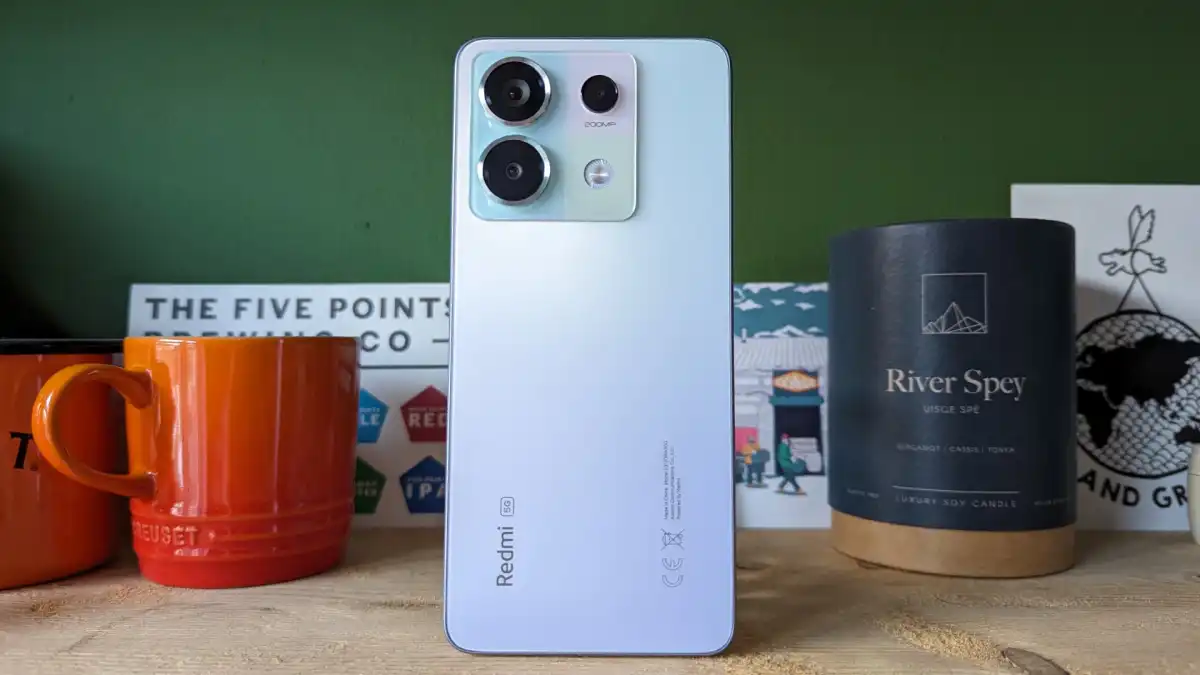
The Note 13 Pro has the same appearance and feel as its predecessor, but adds features like Gorilla Glass Victus on the front for increased durability. Its thin form and balanced weight make for a pleasant grip, and you’ll notice the subtly changed back camera module.
Meanwhile, the Note 13 Pro+ stands out for its premium feel and two-tone design that combines elegance and functionality. It has comparable durability upgrades, such as an aluminum and glass chassis and Gorilla Glass Victus on the screen.
Furthermore, the Pro+ variation has an IP68 dust and water resistant designation, as opposed to the ordinary Pro model’s IP54, giving increased longevity and peace of mind.
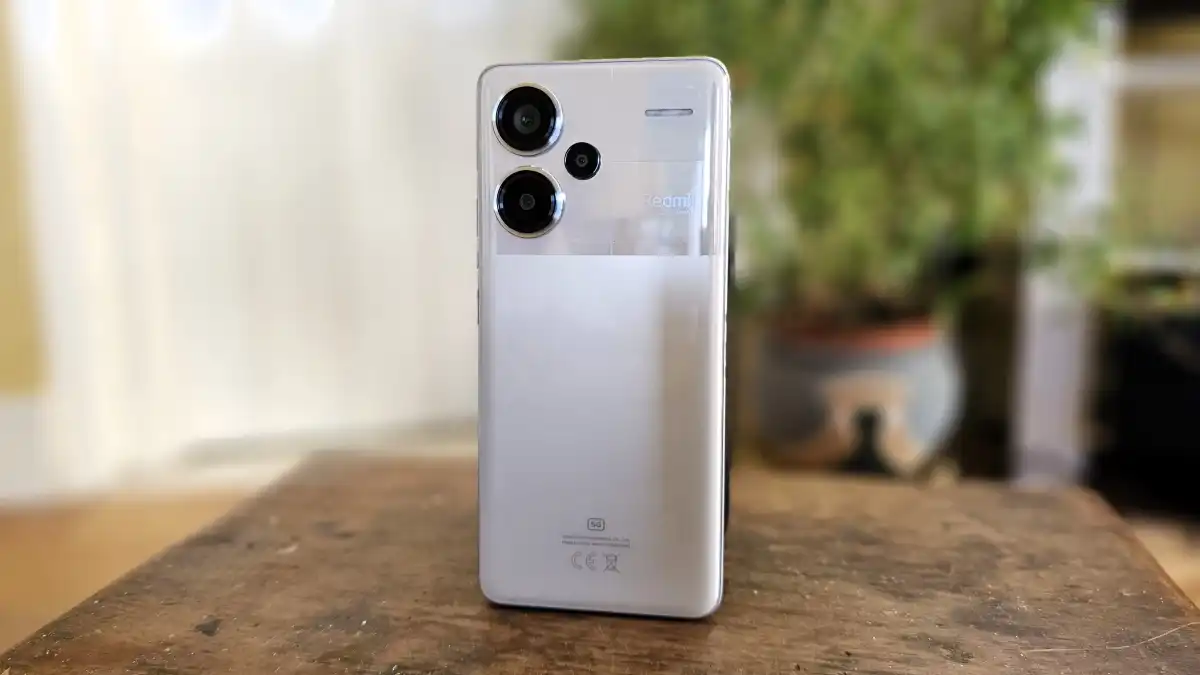
The Redmi Note 13 Pro and Pro+ have 6.67-inch AMOLED panels with 120Hz refresh rates. The screens boast a strong 1.5K resolution (1220 x 2712) and low bezels, making them seem like high-end gadgets. In rare situations, the pre-applied screen protector may have an effect on white tones.
While the refresh rate may be adjusted automatically, the default dynamic mode on both phones alternates between 60 and 120Hz. It indicates there is no LTPO technology for reducing the frequency to 1Hz to save battery life.
Both phones include an optical fingerprint sensor embedded in their displays, however its location and durability are less than ideal.
Stereo speakers with Dolby Atmos compatibility produce decent sound quality; however, only the Pro has a 3.5mm headphone connection.
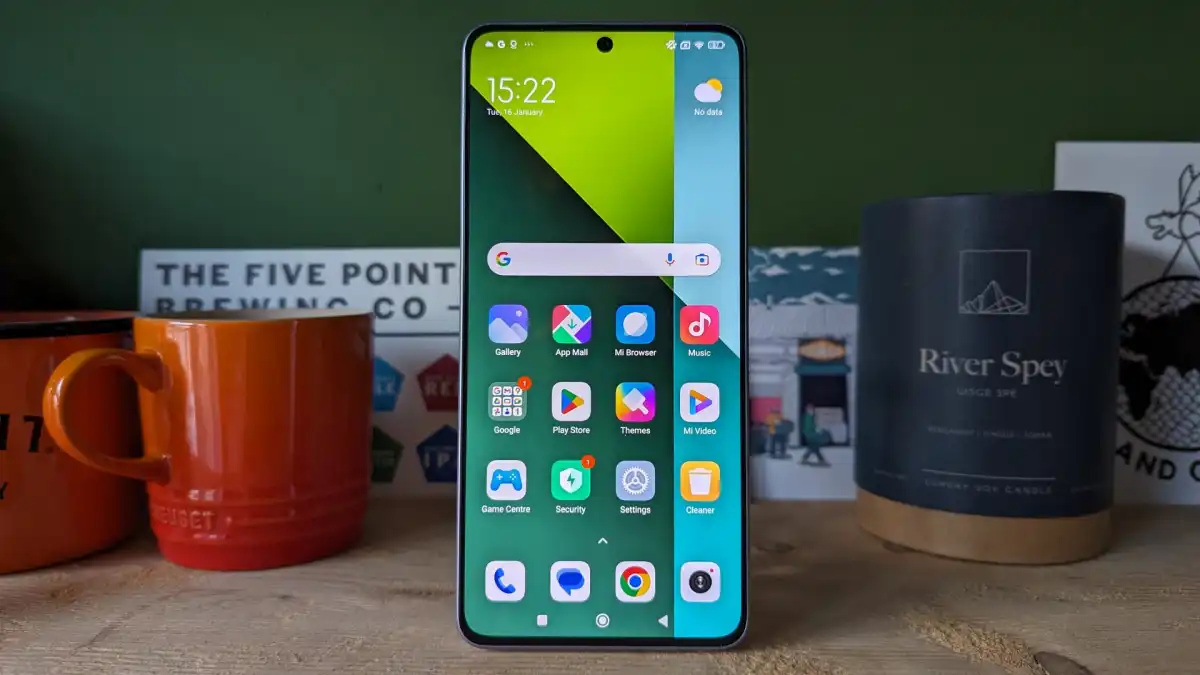
The only other difference on the Redmi Note 13 Pro+ is that its screen is curved rather than flat, though which you prefer will be down to personal preference. The curved design on the Pro+ doesn’t have a significant effect on the viewing experience.

The Redmi Note 13 Pro is powered by the Qualcomm Snapdragon 7s Gen 2 CPU, while the Redmi Note 13 Pro+ uses the MediaTek Dimensity 7200 Ultra processor.
Both chipsets promise smooth performance for everyday chores and gaming, but the Pro+ edition has a greater RAM capacity of 12GB LPDDR5, which might provide a tiny advantage in multitasking capabilities. In the UK, the basic Pro only provides 8GB LPDDR4X.
There is also a difference in available storage: the 13 Pro has 256GB of UFS 2.2 while the 13 Pro+ has 512GB of UFS 3.1.

In our Geekbench 6 multi-core test, the Redmi Note 13 Pro achieved 2872 points. Surprisingly, the Redmi Note 13 Pro+ performed worse, earning just 2596 points. So, based on the actual statistics, it appears that the Redmi Note 13 Pro outperforms the Pro+ in terms of multitasking.
In everyday usage, however, the Redmi Note 13 Pro can occasionally slow down when initially turned on, but the Redmi Note 13 Pro+ blasted through all of the regular duties and always seemed to have plenty of power in reserve, including for gaming.

In the camera department, both devices offer a whopping 200MP main sensor, ensuring crisp and detailed shots in most lighting conditions.
Additionally, you get an 8MP ultrawide camera and a 2MP macro lens on both models, catering to different shooting scenarios. Selfie enthusiasts will appreciate the 16MP front-facing camera on both devices, capturing clear and vibrant images.
The Redmi Note 13 Pro features a significant upgrade in its main camera, although it produces a 12.5Mp by default for reduced file sizes. The camera produces decent results overall, with good detail and natural colours, but images may lack crispness, especially in lower lighting. Portrait mode relies on software and tends to struggle with accuracy.
The ultrawide and macro cameras produce average results, however the selfie camera does nicely. The video quality is good at 1080p/60fps, thanks to OIS (optical image stabilisation) on the primary lens.

The Redmi Note 13 Pro+ likewise records 12.5Mp images by default, with just a little improvement in image quality at 200Mp. In general, favorable lighting circumstances allow you to capture some outstanding photographs with high resolution and dynamic range.
However, colors may seem oversaturated, and the night mode might introduce a significant amount of noise. Portrait mode has trouble with subject-background separation, resulting in uneven background blur.
The ultrawide lens has a broader field of vision but lower image quality, but the macro lens is ineffectual and there is no telephoto option. However, selfies taken with the front-facing camera are really nice.
Overall, there are no major differences between them. Both phones excel in capturing subjects directly in front of the them but fall short in other scenarios.

With a bigger 5100mAh battery than the Redmi Note 13 Pro+’s 5000mAh battery, the Redmi Note 13 Pro has a little longer battery life. But while the Pro only offers 67W wired charging, the latter makes up for it with lightning-fast 120W wired charging.
In only fifteen minutes, the Redmi Note 13 Pro can move from fully dead to 47% battery life, and in just thirty minutes, it can reach 87%. To completely charge it, just ten more minutes are needed.
In contrast, the Pro+ model charges completely in less than 30 minutes, going from 0% to 73% in the same 15 minutes.
This speedy charging is possible thanks to the turbo charger that Xiaomi includes with both phones. While there’s no wireless charging, this isn’t unexpected given the price of the phones.

Some customers may be disappointed as the Redmi Note 13 Pro and Pro+ operate on MIUI 14, which is based on Android 13, instead of the most recent version of Android 14.
A variety of features are available with MIUI, such as split notification and fast settings panels that are similar to iOS. However, bloatware and crowded settings may make navigating the OS difficult.
At least two years of security upgrades are guaranteed under Xiaomi’s software update policy, however other manufacturers’ flagship models can have longer support.
In general, customers may find MIUI less user-friendly than rivals like Motorola, Samsung, and Google, even if it has some helpful features.
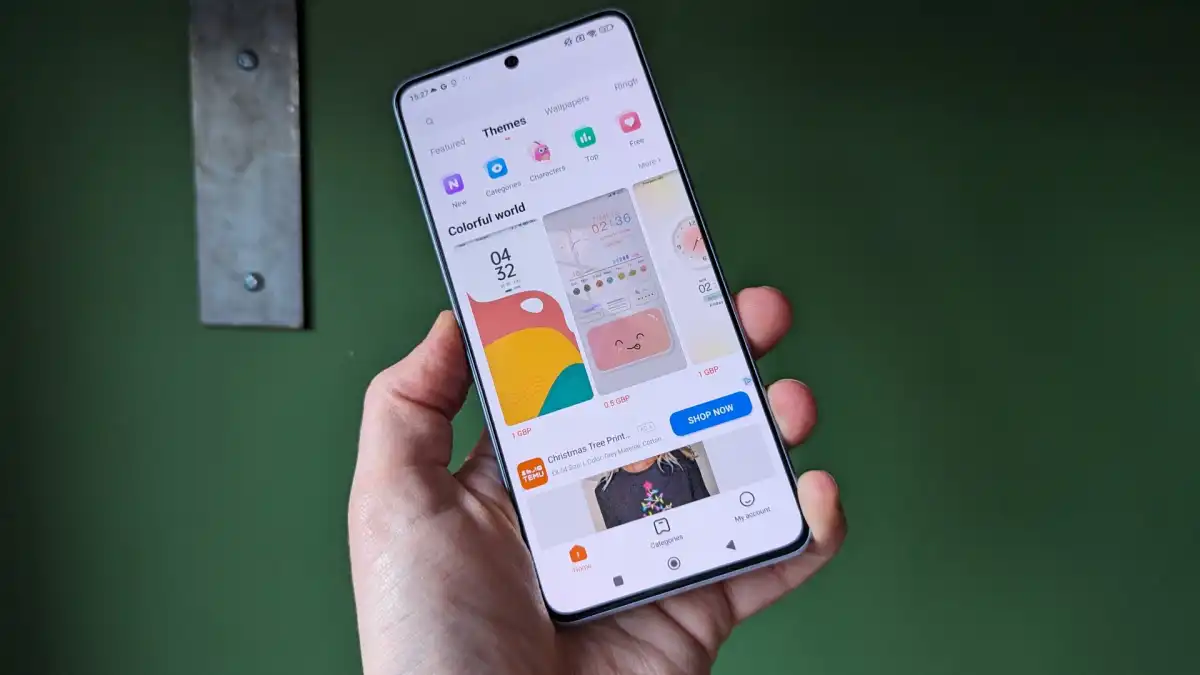
Both phones come equipped with other features such as dual-SIM support, 5G connectivity and an IR blaster. However, the Redmi Note 13 Pro+ gains an upper hand with its support for Wi-Fi 6, offering faster and more reliable wireless connectivity compared to Wi-Fi 5 on the Redmi Note 13 Pro.
Price & availability
The Redmi Note 13 Pro version available in the UK features 8GB of RAM and 256GB of storage, and it costs £339 at full price from Xiaomi and Amazon.
The Redmi Note 13 Pro+ costs £449 in the UK and has 12GB RAM and 256GB storage. It is also available through Xiaomi and Amazon.
While Xiaomi does not officially sell in the United States, foreign models may be obtained on Amazon. Neither phone is available on contract, so your best chance is to purchase it outright and then connect it with a SIM-only plan.
Specs
Xiaomi Redmi Note 13 Pro:
- Android 13 w/ MIUI 14
- 6.67in AMOOLED 120Hz flat display
- Underscreen fingerprint sensor
- Gorilla Glass Victus (front only)
- Qualcomm Snapdragon 7s Gen 2
- 8GB LPDDR4X RAM
- 256GB UFS 2.2 non-expandable storage
- 200Mp, f/1.65 main camera with OIS
- 8Mp, f/2.2 ultrawide camera
- 2Mp, f/2.4 macro camera
- 16Mp, f/2.4 front-facing camera
- Dual stereo speakers
- Dual-SIM
- 5G
- Wi-Fi 5
- Bluetooth 5.2
- IP54
- USB-C
- IR blaster
- Headphone jack
- 5100mAh battery
- 67W wired charging
- 161 x 74 x 7.98mm
- 187g
- Midnight Black, Aurora Purple, Ocean Teal
Xiaomi Redmi Note 13 Pro+:
- Android 13 w/ MIUI 14
- 6.67-inch AMOLED 120Hz curved display
- Under-screen fingerprint sensor
- Gorilla Glass Victus front, glass back
- MediaTek Dimensity 7200 Ultra
- 12GB LPDDR5 RAM
- 512GB UFS 3.1 non-expandable storage
- 200Mp, f/1.65 main camera with OIS
- 8Mp, f/2.2 120˚ ultrawide camera
- 2Mp, f/2.4 macro camera
- 16Mp, f/2.4 front-facing camera
- Dual stereo speakers
- Dual-SIM
- 5G
- Wi-Fi 6
- Bluetooth 5.2
- IP68
- USB-C
- IR blaster
- 5000mAh battery
- 120W wired charging
- 161 x 74 x 7.98mm
- 204.5g
- Midnight Black, Aurora Purple, Moonlight White


